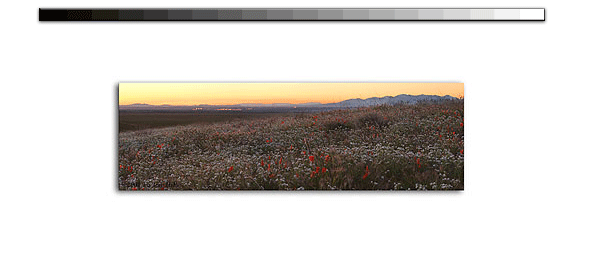|
Were done, right? No, I missed one extremely important ingredient for producing imagesyou. The human behind the image capture tool is by far the most important part of the process. Youve got all the control, the vision, and technical expertise. Without you, theres nothing. A pre-programmed robot may be able to shoot a couple impressive imagesthink of remote missions to Mars. But, without the you element in the process, photography becomes static and uninteresting--more on this later. If you really consider things, most remote imagery isnt that interesting. The subject may be breathtaking but the aesthetic qualities arent that great.
I think the reason people forget the you part of the image capture process is because they take it for granted. Obviously nothing could happen without a person being involved. The less obvious part is the character you bring to the table is extremely important. What you bring beyond your knowledge is key to any image, which I guess is the hypothesis of this article. You and what you arent thinking but feeling is important.
A while ago, I wrote an article exposing the nature of quality and how it could be used in photography. The notion was to make great images that use the best of your technical expertise and artistic vision you need to understand quality and how basic it is to the entire image making process. The article goes further to explain that youthe photographer--already know whats quality by the very nature of being a human being. Quality exists. Its around you waiting to be used. Quality is the way it is but how its interpreted is flexible and adaptive. Because its so flexible, there really cant be productive attempts to definitively define quality in your eyes, all the time. Let me just say, when you see quality you know its there. Well, the basis of this entire quality discussion requires youthe photographerto be involved. It also means your assessments/interpretations of quality as you make the image is a key part of the entire process.
What makes interpreting quality so flexible that you cant define it sufficiently enough to put in a bottle waiting for immediate use? Whats going on that I cant pull a shaker of quality out of my pocket to sprinkle on a situation? This cant happen because youre the key to qualityas imperfect and variable as you are. You interpret and define whats right and whats wrong and how you interpret whats quality and whats not changes as the conditions change. You figure out what catches your eye and what doesnt. You bring all your experiences and emotions to the situation. From that perspective you determine what you like and dislike. Experiences and emotions shape the context through which you view the world. Have a great day, you may see things one way. Have a bad day, you may see things entirely different. Quality is the way it is no matter what. How you interpret and see quality is totally dependent on you and your imperfect variations.
Since quality is the way it is and youre the key for bringing it to any situation, you and your baggage begin to look really important. This is where emotion begins to come into play. Art/theatrical history is loaded with examples of high quality productions especially noted for the emotions they portray. These things are more than pretty colors and wonderful sounds. These productions brought complex circumstances of human emotion together in forms viewers could assess and relate. Success is defined by quality where the production/image is more than a collection of nice, pleasing shapes and colors, and actually involves the viewer by causing an emotional response. The viewer is only included because of the image/production creators intention. This doesnt happen as a matter of chance. It occurs by design and effort. Collections of pleasing shapes and colors that emote a response out of the viewer isnt a matter of chance. It only happens by design and effort.
None of this can occur without you involved. You design the image, you interpret the situation, you make the image. Success or failure of an image is totally dependent on your state of mind. Some say happy people create happy, bright images. Others assert the opposite is also true. The supposition here is an artists emotions are betrayed by their work. The corollary is if no emotion or effort is involved in an images creation, none will be portrayed. If you remember, I asserted success is determined when the image is more than a simple collection of shapes and colors and the viewer because actively involved. Based on our previous corollary, if you dont contribute your own emotional involvement you cant hope for success.
How youre involved with the production of the image is key to this entire process. As long as youve got something at stake with an image theres potential it could be more than its parts. Making images from a sterile perspective has no potential of sending a message to its viewer or getting him involved. Emotion and emotional commitment are critical elements to any successful photograph. The key to this process is figuring out to channel those emotions to produce artistic images. Thatll be a discussion for another date.
Cheers
Tom
|
|
|




